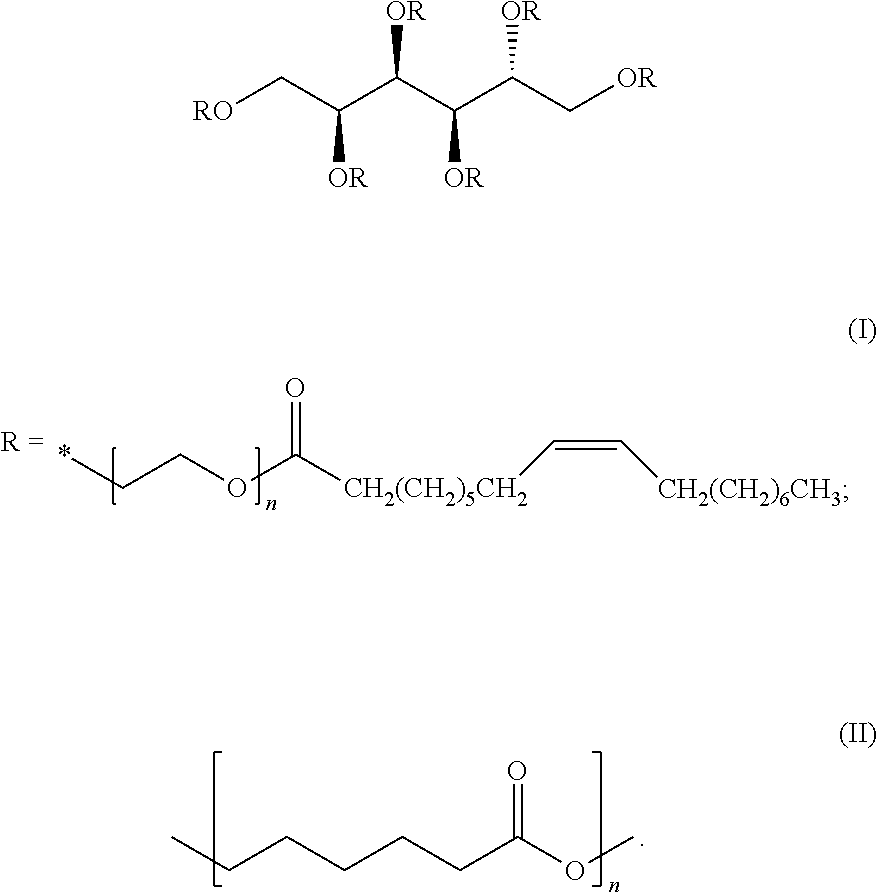Biodegradable polymer
a biodegradable polymer and polymer technology, applied in the field of biodegradable polymers, can solve the problems of reducing the amount of deformation undertaken to the parts, and limiting the application of the said material to mostly one-time use applications, so as to improve the elongation-at-break, improve the elongation-at-break, and improve the elongation-at-break
- Summary
- Abstract
- Description
- Claims
- Application Information
AI Technical Summary
Benefits of technology
Problems solved by technology
Method used
Image
Examples
example 1
of Mechanical Performance Modifier
[0020]A series of reagents and modifying compounds were examined for their mechanical performance improvement ability, such as elongation-at-break and tensile strength after being incorporated into the biodegradable polymer such as polylactic acid (PLA) based polymer. To begin with, NATUREWORKS® 3052D has been selected as the PLA-based polymer due to its injection moulding grade properties that could be readily applicable for industrial processes. Poly(ethylene glycol) sorbitol hexaoleate (PEG-SHO) represented by formula (I) and polycaprolactone (PCL) represented by formula (II) were chosen as the mechanical performance modifier of the PLA-based biodegradable polymer of the present invention:
[0021]The effects of PEG-SHO and PCL modification on PLA have been investigated by comparing their tensile properties before and after modification. Type V specimens (ISO 527) have been injection moulded from the modified and pristine PLA pellets at a barrel tem...
PUM
| Property | Measurement | Unit |
|---|---|---|
| Fraction | aaaaa | aaaaa |
| Fraction | aaaaa | aaaaa |
| Time | aaaaa | aaaaa |
Abstract
Description
Claims
Application Information
 Login to View More
Login to View More - R&D
- Intellectual Property
- Life Sciences
- Materials
- Tech Scout
- Unparalleled Data Quality
- Higher Quality Content
- 60% Fewer Hallucinations
Browse by: Latest US Patents, China's latest patents, Technical Efficacy Thesaurus, Application Domain, Technology Topic, Popular Technical Reports.
© 2025 PatSnap. All rights reserved.Legal|Privacy policy|Modern Slavery Act Transparency Statement|Sitemap|About US| Contact US: help@patsnap.com

